DSLR cameras have revolutionized photography and videography, pushing the boundaries with advanced features and exceptional image quality. While mirrorless cameras are becoming increasingly popular, DSLRs still provide unique advantages that many photographers appreciate. If you're planning to buy a DSLR and are unsure what to choose, we are here to help. In this buying guide, we will walk you through the essential factors to consider when buying a DSLR camera, ensuring you find the perfect match for your needs.
Factors to Consider When Buying a DSLR Camera
Choosing the right DSLR camera is crucial to ensure it aligns with your interests and needs. With popular brands like Canon, Nikon, and Sony offering a wide range of models, it can be overwhelming to find the perfect fit without proper knowledge. This buying guide will explore various factors to help you make an informed buying decision.
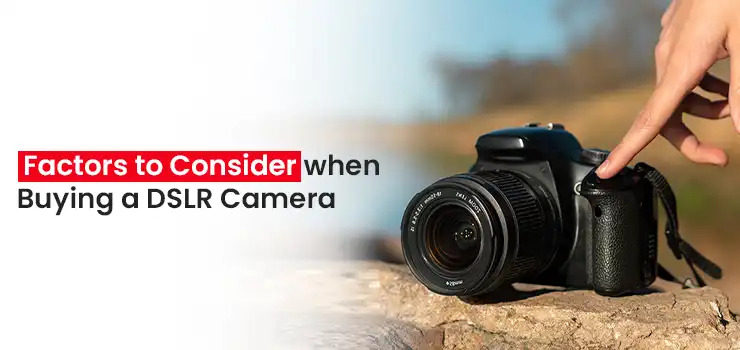
Budget
Budget is often the primary consideration when buying a DSLR camera. Your budget will significantly influence the model you choose. Entry-level and mid-range DSLRs offer excellent value and capabilities for most photographers, while professional-grade models, although more expensive, boast more advanced features and superior performance. For instance, Canon DSLRs, like the EOS Rebel series, are known for their user-friendly interfaces and robust feature sets, making them an excellent choice for beginners. Assess your budget and choose accordingly.
Sensor Size
The sensor is the heart of a DSLR camera, responsible for capturing light and converting it into an image. There are two main sensor types:
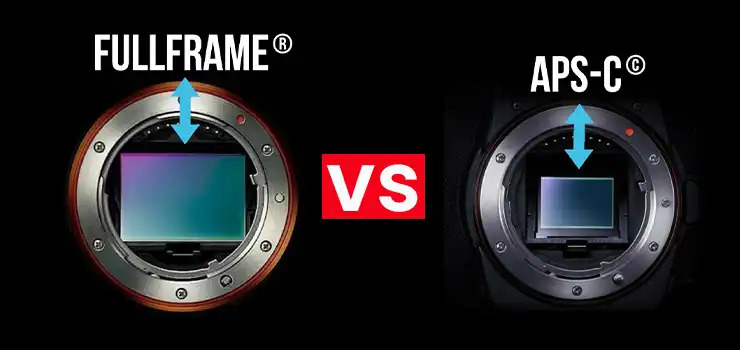
- Full-Frame Sensor
Full-frame DSLR cameras feature a 35mm sensor, providing a wide range and excellent low-light performance. These sensors deliver superior image quality with more detail and better dynamic range. The full-frame sensor allows for wide-angle views and a shallower depth of field, resulting in a beautiful background blur (bokeh). Full-frame sensors also offer better noise reduction capabilities, ensuring clearer images. Nikon DSLRs, such as the D850, are renowned for their exceptional image quality and dynamic range, catering to professional photographers. However, full-frame DSLR cameras tend to be heavier and more expensive.
- APS-C Sensor
APS-C sensors, also known as cropped sensors, are smaller than full-frame sensors. As a result, they capture a tighter field of view but offer a deeper depth of field, maintaining sharp details throughout the image. APS-C DSLR cameras are generally more affordable and compact, making them an excellent choice for beginners and enthusiasts. The crop factor effectively increases the focal length of lenses, which can be advantageous for wildlife and sports photography. However, these cameras may struggle in low-light conditions due to their smaller sensor size.
Lens Compatibility
The availability and compatibility of lenses are crucial when choosing a DSLR. Different camera brands have different lens mounts, and not all lenses are compatible with all camera bodies. Canon's extensive lens lineup ensures that you'll find the perfect lens for any type of photography, from portraits to landscapes. Check the range of lenses available for the DSLR you are considering, and ensure they meet your needs for various types of photography (e.g., macro, telephoto, wide-angle).
Megapixels
A higher megapixel count in a DSLR camera provides higher image resolution and more detail. This allows for cropping images without sacrificing quality and producing larger, more detailed prints. However, higher megapixel counts also require more storage space. A DSLR camera with 16-24 megapixels is generally sufficient for most photography needs.
Shutter Speed
Shutter speed determines the amount of time the shutter remains open when capturing an image. It plays a crucial role in capturing sharp images of fast-moving subjects or scenes with low lighting. A slower shutter speed can help illuminate darker or blurry scenes, while a faster shutter speed ensures crisp images of quickly moving objects with no blur or grain. A broader range of shutter speeds in a DSLR camera allows for more precise control over your images.
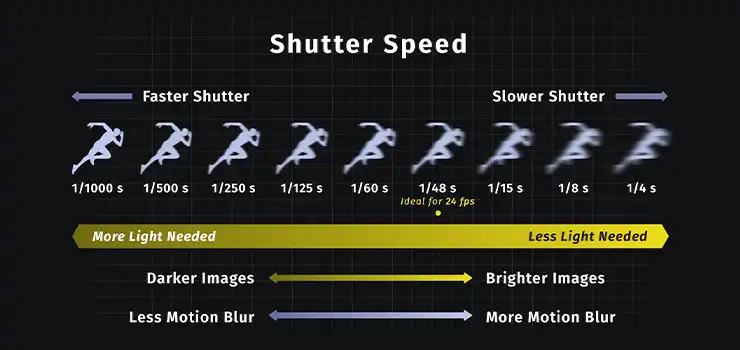
ISO Range
The ISO range indicates a DSLR camera's low-light performance. Higher ISO settings increase the sensor's sensitivity to light, allowing for better low-light photography. However, increasing the ISO too much can introduce noise, blur, and graininess to your images. Consider the ISO range you need based on the types of scenes you typically shoot.
Burst Rate
The burst rate determines how many frames per second (fps) a DSLR camera can capture in quick succession by holding down the shutter release button. A higher burst rate is essential for capturing sharp images of moving subjects. This mode, often referred to as burst mode, is invaluable for photographers focusing on moving objects or action shots.
Autofocus System
A good autofocus (AF) system is crucial for capturing sharp images, especially of moving subjects. Look for DSLRs with a high number of AF points and advanced tracking capabilities for better accuracy and focus. An advanced autofocus system is a valuable feature, enabling the camera to automatically find and focus on the subject. The speed and accuracy of the autofocus system are critical for capturing sharp images of moving subjects. Nikon's advanced autofocus system, especially in models like the D500, excels at capturing fast-moving subjects with precision.
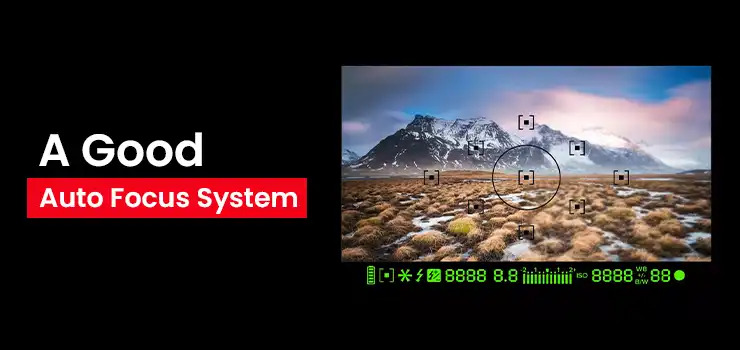
Video Capabilities
If you want to use your DSLR as a video camera, consider a model with high-definition (HD) or 4K video recording capabilities. Look for models that offer a variety of frame rates (24fps, 30fps, 60fps) to match different filming needs, as well as features like microphone input and clean HDMI output for enhanced video production. Canon DSLRs often feature innovative video capabilities, like the Dual Pixel CMOS AF, providing smooth and accurate autofocus during video recording.
Build Quality
Durability is essential for a DSLR, especially if you shoot in challenging environments. A well-constructed DSLR made of sturdy materials with weather sealing will withstand dust, moisture, and temperature variations. A higher build quality ensures longevity and peace of mind, especially for frequent outdoor shoots. Nikon's rugged build quality and weather sealing, seen in models like the D750, make their cameras ideal for outdoor and adventure photography.
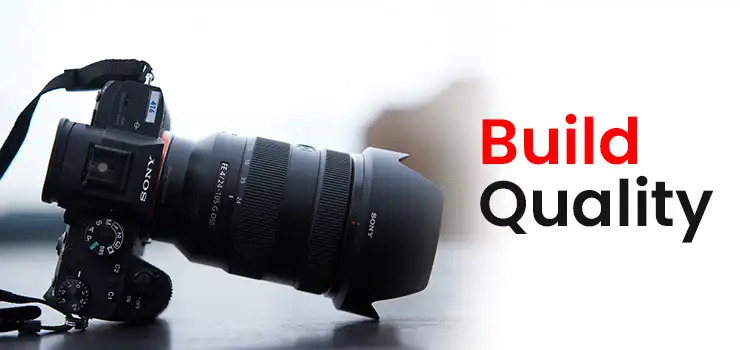
Ergonomics
Comfort is key when using a DSLR camera, especially during extended shooting sessions. Consider the grip size, button placement, and weight distribution to find a model that feels comfortable in your hands. Try holding different DSLR models to find the best ergonomic fit for your shooting style.
Connectivity
Modern DSLRs often feature WiFi and Bluetooth for easy photo transfer and remote control via smartphone apps. GPS functionality is also useful for geotagging photos, particularly for travel photography.
Battery Life
Battery life is an important consideration, especially if you plan on heavy shooting or long use. Look for DSLR cameras with high-capacity batteries that can provide extended battery life. Nikon DSLR cameras, like the D7500, often come with excellent battery life, perfect for extended shooting sessions without the need for frequent recharges. Also consider the impact of extreme temperatures on battery performance, as batteries tend to drain faster in hot or cold environments. Choosing a DSLR camera with a high-ampere battery can help mitigate this issue.
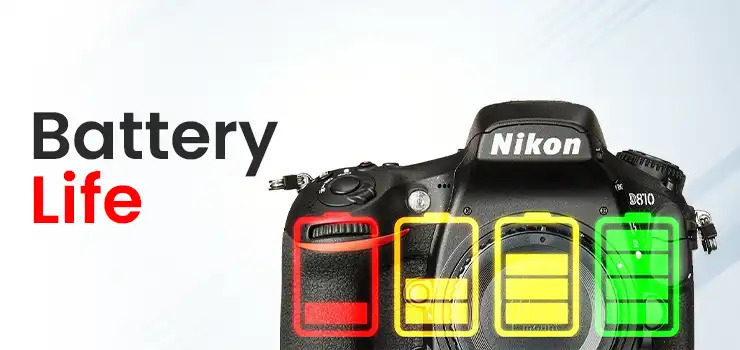
Brand Reputation
Brand reputation and after-sales support can be an important factor, especially for beginners or those who plan to use the DSLR camera extensively. Reputable brands like Canon and Nikon offer better customer support, firmware updates, and a broader range of accessories. Some photographers also prefer to stick with a specific brand ecosystem to maintain consistency and compatibility across their gear.
Where to Buy the Best DSLR Camera in Bangladesh?
We hope this guide helps you choose the perfect DSLR camera for your needs. The perfect DSLR camera is the one that aligns with your specific requirements, shooting style, and budget. If you're looking for a trusted DSLR camera shop in Bangladesh, Star Tech is an excellent option. With a wide range of DSLR cameras from reputable brands at competitive prices. Browse the selection and find the DSLR that best suits your preference and budget.

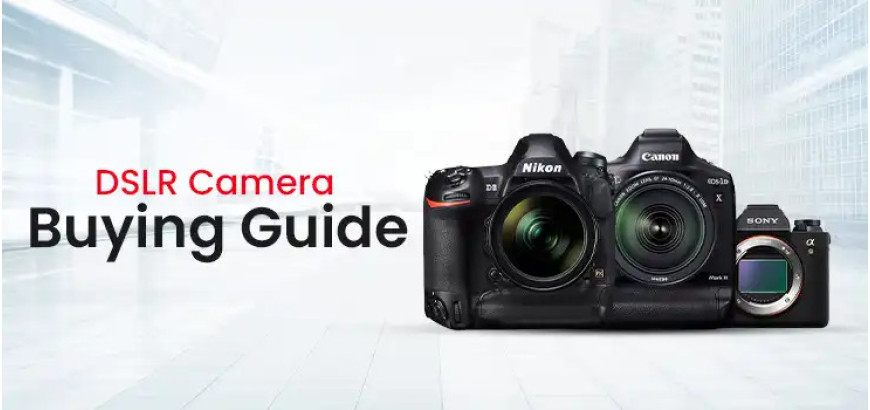

Comments
There are no comments for this Article.